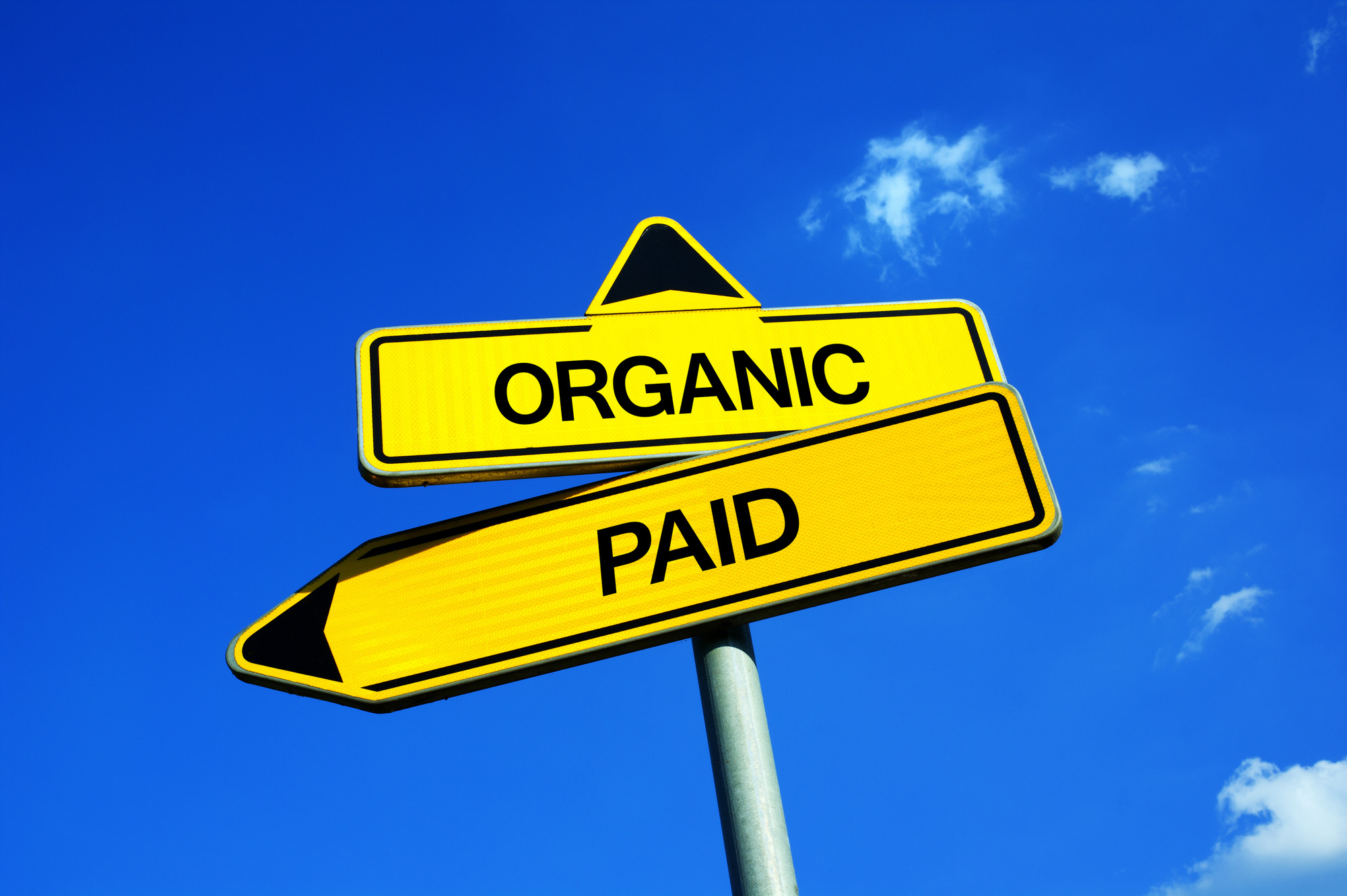Search engine optimization is without a doubt one of the most valuable marketing tools available today. But, just when you think you’ve mastered the art of SEO, another piece of the puzzle emerges that proves you don’t know everything that you thought you did, after all.
It’s true that the keys contributors to high-ranking SEO are a long list of detailed factors which are subject to change at any given moment. In fact, Google sports a list of 200 ranking factors which play a part in their unique algorithm, as reported by BackLinko earlier this year.
In addition to an ever-changing list of SEO factors, there are other considerations for marketing professionals to take into account when gauging where they stand against their competition. This includes your website’s traffic sources.
To be even more specific, there is the comparison of direct versus organic traffic.
Read on to find out the difference!
Direct Versus Organic Traffic Sources: What’s the Difference and Why it Matters
If you haven’t ever given any thought to the difference between direct and organic traffic, now is a good time to start.
Although many marketers group these two together, they are not the same. But, they both do play a role in how SEO-savvy your site really is. That’s why it’s important that you understand how the terms direct and organic impact your flow of traffic and relate to your website’s SEO performance individually.
Understanding the Meaning Behind Individual Traffic Sources
In order to maintain your site’s full ranking potential, it’s important that you understand where you get your traffic.
Understanding where your audience is coming from offers you the advantage to customize content to attract more visitors. It also allows you an insider perspective on where to concentrate your efforts in order to better fulfill your marketing goals.
The two main types of traffic that your website receives are organic and direct. Once you grasp these terms completely, you are on your way to more effective optimization.
Direct Traffic
Direct traffic is a common form of traffic that doesn’t track to any known source or referral link.
While other forms of traffic can often be traced back to links from a variety of sources, including social media, search engines, and blog posts, these stand alone. In other words, direct traffic results from users who manually enter or bookmark your site’s URL.
Many times, the users who reach your site by means of direct traffic have indeed been referred by someone else or through a deliberate marketing strategy. However, the tactics which lure direct traffic are not usually considered part of a specific SEO strategy. They cannot be tracked or traced, and are therefore unequivocal to organic, as well as other types, of search results.
Examples of direct traffic include someone who enters your website’s URL off of your business card, flier, or another piece of in-print marketing material. Or, it might be that they received the URL from your site through word of mouth, from a friend or colleague who thought they might find the content useful.
What direct traffic visitors do not do is click on a link from a blog, article, or search engine recommendation that then routes them to your website.
Organic Traffic
Organic traffic is the type of traffic that digital marketers tend to be most interested in. Organic traffic is the kind of followers that your SEO strategy aims for. It is traffic that reaches your site by way of a search engine, such as Google or Bing, and does not include paid results.
It has been reported that 75% of people never scroll beyond the first page of search results according to SEO guru Neil Patel. This explains why it is so crucial that your site’s SEO performance garners high rankings. It also explains a lot about the route that organic traffic follows.
While organic search results might include page after page of websites, the likelihood of a visitor clicking on a site that’s listed on the tenth page of results is pretty low. In fact, according to Chitika, the average traffic share generated by the sites listed on the first Google search results page is 91.5%.
What does this mean?
Well, it means that your SEO strategy should aim to place you on the first page of results in order to get the greatest amount of organic traffic channeled to your site.
Additional Types of Traffic to Consider
Other than direct and organic, there are many additional types of traffic that impact the number of visitors your website might have during any given period.
These include the following:
Social Traffic
This is traffic that reaches your site through social media platforms, including Facebook, Instagram, Twitter, and others.
Paid Search
When businesses peruse Google Adwords or another form of paid advertising that results in their name appearing in a visitor’s search, they are relying on traffic from a paid search.
Email Marketing
Visitors from email marketing that has been tagged with an email marketing parameter is specific to this type of traffic.
Although all of these types of traffic are not likely to gain the same amount of visitor numbers to your site, it doesn’t mean that they don’t all carry some weigh in directing potential customers to your business. However, there are those that tend to garner more consumer interest, and therefore might be viewed as more worthy of your marketing efforts.
Which Type of Traffic Should You Concentrate On to Gain the Highest Amount of Visitors to Your Site?
According to research reported by BrightEdge, 51 percent of all website traffic comes from organic search, 10 percent from paid search, 5 percent for social, and 34 percent from all other sources.
Considering the statistics above, it would make sense for marketers to concentrate their efforts on SEO that focuses on organic search rankings.
While these stats may not tell us just how much of our audience comes from direct traffic, they do tell us that more than half of our site’s audience comes from organic searches. This means that we can depend on increasing organic traffic to be the most reliable way to boost our website’s visitor numbers.
Additionally, if a website is not having any luck gaining traffic organically, these statistics tell us that there might be some progress available through paid marketing strategies.
How to Boost Your Site Organically
In order to get your website to climb rankings in organic searches, there are a few tactics that might help.
You might be able to tailor your keywords so that they are more likely to be noticed by Google and other search engines. Strategies for keyword rankings include creating original keywords, and long tail keywords that apply directly to your site’s content.
You could also focus on producing useful, interesting content that is fully optimized and of an appropriate length. Research shows that the majority of content on Google’s first page of results averages 1890 words. If your content rarely reaches the average word count of other top-rankers, you might want to include more substance to your posts.
Of course, there are dozens of additional SEO factors that can also attribute to your site’s rank. This brings us back to the reason why it is crucial for businesses to stay on top of the latest developments in ranking factors and search engine algorithm changes that might change the dynamics of how their page performs in online listings.
Where Does This Leave Direct Traffic Marketing?
Believe it or not, marketing that aims to garner direct traffic is not obsolete. In fact, a 2014 article by Forbes Magazine calls “word of mouth marketing” the most important form of social media.
Essentially, direct traffic drives visitors largely by word of mouth, excluding the employees that work for the website’s company, or visitors similar to these.
However, it is easy to see why your strategies for organic and direct traffic would contain vastly different techniques.
When considering digital marketing strategies, organic results stand to benefit the most. Although, traditional marketing strategies might include a wide range of tactics that could effectively boost direct traffic.
Want to Improve Your Website’s Ranking Right Now?
If you want to boost your organic traffic right now, our webmasters can help lead the way.
Our keyword ranking check report uses important data collected from your website to show you how to improve your search rankings in no time.
If you’ve been struggling to get the rankings you crave, you should give our search engine ranking tool a try. You might be surprised at how much you can learn about your website’s ranking ability just by entering your domain and allowing our webmasters to go to work.
Ready to boost your rankings?
Check your rankings now with our easy-to-use tool to get results and improve your site’s performance today!



